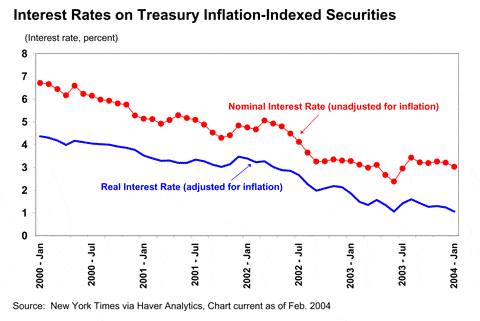Interest rates are among the most important macroeconomic variables. In this article, we will discuss the difference between the Nominal and Real Interest rates.
Nominal And Real Interest Rates
Economists call the interest rate that the bank pays the nominal interest rate and the increase in your purchasing power the real interest rate.
To Understand it better
Suppose you deposit $100 in a bank account that pays 5 percent interest annually.
After a year, you withdraw your savings and the accumulated interest.
Are you 5 percent richer than you were when you made the deposit a year earlier?
The answer depends on what “richer’’ means.
You definitely have 5 percent more dollars than you had before.
But if prices have risen, so that each dollar buys less, then your purchasing power has not risen by 5 percent.
If the inflation rate was 3 per cent, then the amount of goods you can buy has increased by only 2 per cent.
And if the inflation rate was 10 percent, then your purchasing power has fallen by 5 percent.

The nominal interest rate is the interest rate as usually reported: it is the rate of interest that investors pay to borrow money.
The real interest rate is the nominal interest rate corrected for the effects of inflation.
Real Interest Rate Formula
If
r = i − π.
The real interest rate is the difference between the nominal interest rate and the rate of inflation.
Fisher Effect
Rearranging the terms in our equation for the real interest rate, we can show that the nominal interest rate is the sum of the real interest rate and the inflation rate:
i = r + π
The equation written in this way is called the Fisher equation, after economist Irving Fisher.
It shows that the nominal interest rate can change for two reasons:
- Because of the real interest rate changes or
- Because of the inflation rate changes.
Once we separate the nominal interest rate into these two parts, we can use this equation to develop a theory that explains the nominal interest rate.
The quantity theory of money shows that the rate of money growth determines the rate of inflation.
The Fisher equation then tells us to add the real interest rate and the inflation rate together to determine the nominal interest rate.
The quantity theory and the Fisher equation together tell us how money growth affects the nominal interest rate.
According to the quantity theory, an increase in the rate of money growth of 1 percent causes a 1-percent increase in the rate of inflation.
According to the Fisher equation, a 1-percent increase in the rate of inflation, in turn, causes a 1% increase in the nominal interest rate.
The 1 for 1 relation between the inflation rate and the nominal interest rate is known as the Fisher effect.
Summary
The nominal interest rate is the sum of the real interest rate and the inflation rate. The Fisher effect says that the nominal interest rate moves one-for-one with expected inflation.
